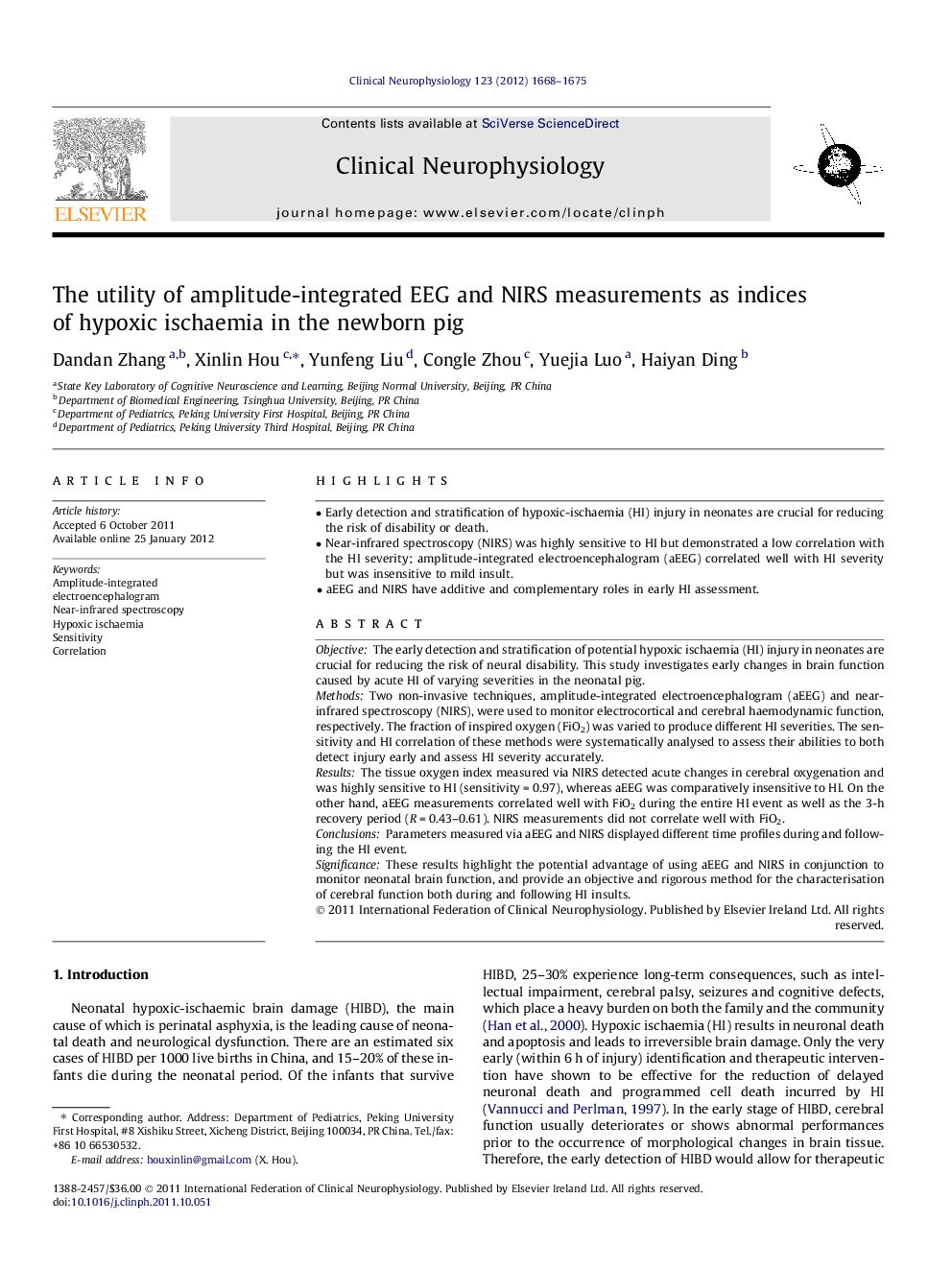| Article ID | Journal | Published Year | Pages | File Type |
|---|---|---|---|---|
| 3043436 | Clinical Neurophysiology | 2012 | 8 Pages |
ObjectiveThe early detection and stratification of potential hypoxic ischaemia (HI) injury in neonates are crucial for reducing the risk of neural disability. This study investigates early changes in brain function caused by acute HI of varying severities in the neonatal pig.MethodsTwo non-invasive techniques, amplitude-integrated electroencephalogram (aEEG) and near-infrared spectroscopy (NIRS), were used to monitor electrocortical and cerebral haemodynamic function, respectively. The fraction of inspired oxygen (FiO2) was varied to produce different HI severities. The sensitivity and HI correlation of these methods were systematically analysed to assess their abilities to both detect injury early and assess HI severity accurately.ResultsThe tissue oxygen index measured via NIRS detected acute changes in cerebral oxygenation and was highly sensitive to HI (sensitivity = 0.97), whereas aEEG was comparatively insensitive to HI. On the other hand, aEEG measurements correlated well with FiO2 during the entire HI event as well as the 3-h recovery period (R = 0.43–0.61). NIRS measurements did not correlate well with FiO2.ConclusionsParameters measured via aEEG and NIRS displayed different time profiles during and following the HI event.SignificanceThese results highlight the potential advantage of using aEEG and NIRS in conjunction to monitor neonatal brain function, and provide an objective and rigorous method for the characterisation of cerebral function both during and following HI insults.
► Early detection and stratification of hypoxic-ischaemia (HI) injury in neonates are crucial for reducing the risk of disability or death. ► Near-infrared spectroscopy (NIRS) was highly sensitive to HI but demonstrated a low correlation with the HI severity; amplitude-integrated electroencephalogram (aEEG) correlated well with HI severity but was insensitive to mild insult. ► aEEG and NIRS have additive and complementary roles in early HI assessment.
